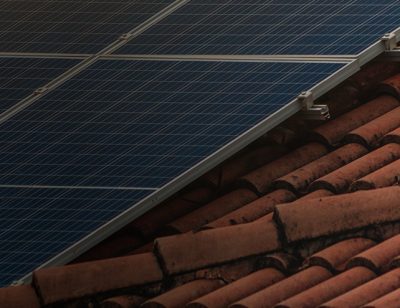By David Castree, Global President Energy & Utilities
Solar energy is transforming how communities’ access and consume electricity. Australia leads the world in rooftop solar adoption, yet millions of apartment dwellers and renters remain locked out of this energy revolution. Meanwhile, in the United States, community solar projects are rapidly expanding, providing equitable access to clean energy for those unable to install rooftop systems.
Hansen, a global leader in energy software solutions, has played a significant role in facilitating community solar in the U.S. Now, with Australia’s renewable energy transition accelerating, bolstered by government initiatives such as Solar for Apartments Program (NSW Government, 2023), Hansen is uniquely positioned to help deliver inclusive and scalable clean energy solutions to more Australians. Leveraging its expertise in solar billing, customer management, and community battery integration, Hansen can help energy customers bridge the accessibility gap and enable broader solar participation.
Bridging the Solar Accessibility Gap
Australia’s Rooftop Solar Success and Its Limitations
 Australia boasts the highest per-capita solar adoption globally, with over 30% of homes equipped with rooftop solar, contributing more than 11% of the nation’s electricity needs (Clean Energy Regulator, 2023). However, this success has largely been confined to single-family homes with available roof space, leaving apartment dwellers and renters unable to participate in the benefits of solar energy.
Australia boasts the highest per-capita solar adoption globally, with over 30% of homes equipped with rooftop solar, contributing more than 11% of the nation’s electricity needs (Clean Energy Regulator, 2023). However, this success has largely been confined to single-family homes with available roof space, leaving apartment dwellers and renters unable to participate in the benefits of solar energy.
The opportunity to extend solar access to millions of Australians has never been greater. However, several barriers remain:
- Complex Decision-Making: Strata approval for shared solar installations is slow and bureaucratic.
- Tenant vs. Owner Misalignment: Renters and landlords often lack aligned incentives to invest in solar.
- Technical Constraints: High-rise buildings have limited roof space, making individual solar setups impractical.
Hansen’s technology can help overcome these barriers by streamlining subscription-based solar access, ensuring efficient billing, and integrating community batteries to optimise energy use.
The U.S. Community Solar Model: A Blueprint for Australia
Community solar has emerged as a powerful solution in the United States, allowing participants to subscribe to a shared solar array, often located offsite. This model enables renters, apartment dwellers, and low-income households to benefit from solar energy savings without requiring rooftop installations.
Hansen has been at the forefront of managing community solar projects in the U.S. through its Software-as-a-Service (SaaS) platform. This system streamlines customer acquisition, automates billing and credit allocation, and ensures compliance with regulatory frameworks. Hansen’s role has been instrumental in making community solar accessible, particularly for low-to-moderate-income (LMI) households, which benefit from targeted incentives and reduced energy costs (National Renewable Energy Laboratory, 2022).
Case Study: New York’s Community Solar Success
In New York, Hansen partnered with a leading energy provider to manage a community solar program serving over 10,000 households. Through the platform, customers could subscribe seamlessly, monitor their savings, and benefit from automatic billing integration. Low-income participants saw energy costs reduced by up to 20%, showcasing the power of well-structured community solar programs (New York State Energy Research and Development Authority, 2023).
Today, Hansen supports companies in more than ten US states and is primed for many others, as regulations are approved.
Community Batteries: Expanding Solar’s Reach
While community solar expands access to renewable energy, community batteries enhance its effectiveness by providing storage and grid resilience.
How Community Batteries Work
Community batteries collect and store excess solar energy from multiple sources, redistributing it during peak demand hours. This model benefits participants in several ways:
- Energy Storage & Redistribution: Balancing supply and demand by storing solar energy when production is high and using it when needed.
- Apartments Gain Solar Access: Residents can access stored solar power without needing individual rooftop panels.
- Economic Benefits: Participants save on electricity bills by drawing from stored energy during high-price periods.
Hansen’s experience in managing community battery projects in the U.S. provides a strong foundation for integrating these solutions into Australia’s emerging community solar framework.
Scaling Impact: Managing Over 500 MW of Community Solar
Hansen currently manages over 500 MW of community solar capacity in the U.S., with projections to surpass 1 GW as expansion continues under the Inflation Reduction Act (U.S. Department of Energy, 2023). This proven track record provides a strong foundation for Hansen to play a leading role in Australia’s emerging community solar sector.
Hansen’s Role: Driving the Future of Community Solar & Storage
Hansen’s expertise in community solar software solutions makes it uniquely positioned to support Australia’s transition to a more inclusive solar economy.
Key Capabilities of Hansen’s Solar Platform
- Customer Management & Enrollment: White-labeled digital portals, omnichannel communication, and automated waitlist management.
- Subscription Allocation & Energy Monitoring: Automatic energy tracking, dynamic pricing optimisation, and seamless utility coordination.
- Billing & Revenue Management: Supports both one-bill (integrated with utility) and two-bill (separate solar provider) models, automated invoicing, and real-time reconciliation.
- Regulatory Compliance & Security: Adheres to energy market regulations, ensuring smooth integration with utilities and state policies.
- Support for Low-Income Customers: Simplifies enrollment for disadvantaged groups, increasing solar access equity.
Adapting Hansen’s Model to Australia
While Australia’s solar market differs from the U.S., Hansen’s technology can be tailored to support:
- Rental & Apartment Communities: Adapting community solar models to cater to multi-tenant buildings.
- Community Battery Integration: Managing distributed energy storage across urban areas.
- Embedded Networks & Microgrids: Supporting shared solar solutions within high-density developments.
- Virtual Power Plants (VPPs): Aggregating distributed solar and battery assets to enhance grid reliability (Australian Energy Market Commission, 2024).
- Energy Retailer Partnerships: Providing software solutions for retailers offering solar subscription models.
With its headquarters in Melbourne, Hansen is well-positioned to collaborate with Australian energy providers, policymakers, and community organisations to scale these solutions.
Conclusion: A Solar Future for All
 The next phase of the clean energy revolution isn’t just about installing more solar panels; it’s about ensuring more equitable access to solar benefits for all communities. By combining community solar with battery storage, we can create a more resilient, inclusive, and cost-effective energy system.
The next phase of the clean energy revolution isn’t just about installing more solar panels; it’s about ensuring more equitable access to solar benefits for all communities. By combining community solar with battery storage, we can create a more resilient, inclusive, and cost-effective energy system.
Hansen’s success in the U.S. proves that scalable, software-driven solutions can empower renters, apartment dwellers, and underserved communities to participate in the clean energy transition. As Australia ramps up investments in community solar and batteries, Hansen is poised to be a key player in making these initiatives successful.
By leveraging cutting-edge billing technology, regulatory expertise, and community-driven solutions, Hansen can help Australia create a future where everyone, regardless of housing type or income level, has access to affordable, renewable energy.
